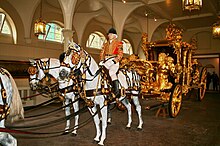
William IV was King of the United Kingdom of Great Britain and Ireland and King of Hanover from 26 June 1830 until his death in 1837. The third son of George III, William succeeded his elder brother George IV, becoming the last king and penultimate monarch of Britain's House of Hanover.

Adelaide of Saxe-Meiningen was Queen of the United Kingdom of Great Britain and Ireland and Queen of Hanover from 26 June 1830 to 20 June 1837 as the wife of King William IV. Adelaide was the daughter of George I, Duke of Saxe-Meiningen, and Luise Eleonore of Hohenlohe-Langenburg. Adelaide, the capital city of South Australia, is named after her.

The Crown Jewels of the United Kingdom, originally the Crown Jewels of England, are a collection of royal ceremonial objects kept in the Jewel House at the Tower of London, which include the coronation regalia and vestments worn by British monarchs.
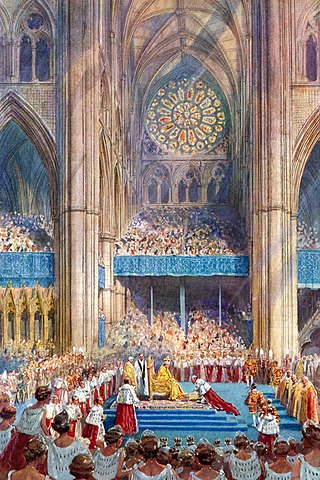
The coronation of the monarch of the United Kingdom is an initiation ceremony in which they are formally invested with regalia and crowned at Westminster Abbey. It corresponds to the coronations that formerly took place in other European monarchies, which have all abandoned coronations in favour of inauguration or enthronement ceremonies. A coronation is a symbolic formality and does not signify the official beginning of the monarch's reign; de jure and de facto their reign commences from the moment of the preceding monarch's death or abdication, maintaining legal continuity of the monarchy.
'I was glad' is an English text drawn from selected verses of Psalm 122. It has been used at Westminster Abbey in the coronation ceremonies of British monarchs since those of King Charles I in 1626.
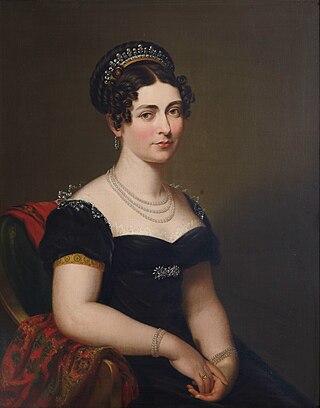
Princess Victoria of Saxe-Coburg-Saalfeld, later Princess of Leiningen and subsequently Duchess of Kent and Strathearn, was a German princess and the mother of Queen Victoria of the United Kingdom. As the widow of Charles, Prince of Leiningen, from 1814, she served as regent of the Principality during the minority of her son from her first marriage, Karl, until her second wedding in 1818 to Prince Edward, fourth son of George III.

Henry, Duke of Cornwall was the first living child of King Henry VIII of England and his first wife, Catherine of Aragon, and though his birth was celebrated as that of the heir apparent, he died within weeks. His death and the failure of Henry VIII and Catherine to produce another surviving male heir led to succession and marriage crises that affected the relationship between the English church and Roman Catholicism, giving rise to the English Reformation.
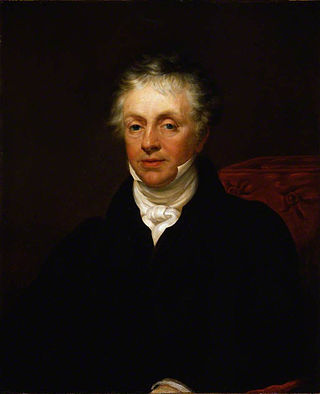
Thomas Attwood was an English composer and organist.

The Honourable The King's Champion is an honorary and hereditary office in the Royal Household of the British sovereign. The champion's original role at the coronation of a British monarch was to challenge anyone who contested the new monarch's entitlement to the throne to trial by combat. Although this function was last enacted at the coronation of George IV in 1821, the office continues to descend through the Dymoke family.
A coronation anthem is a piece of choral music written to accompany the coronation of a monarch.

The coronation of Elizabeth II as queen of the United Kingdom and the other Commonwealth realms took place on 2 June 1953 at Westminster Abbey in London. She acceded to the throne at the age of 25 upon the death of her father, George VI, on 6 February 1952, being proclaimed queen by her privy and executive councils shortly afterwards. The coronation was held more than one year later because of the tradition of allowing an appropriate length of time to pass after a monarch dies. It also gave the planning committees adequate time to make preparations for the ceremony. During the service, Elizabeth took an oath, was anointed with holy oil, was invested with robes and regalia, and was crowned Queen of the United Kingdom, Canada, Australia, New Zealand, South Africa, Pakistan, and Ceylon.

In the United Kingdom, state funerals are usually reserved for monarchs. The most recent was the state funeral of Queen Elizabeth II on 19 September 2022.

Charlotte Florentia Percy, Duchess of Northumberland, was governess of the future Queen Victoria.
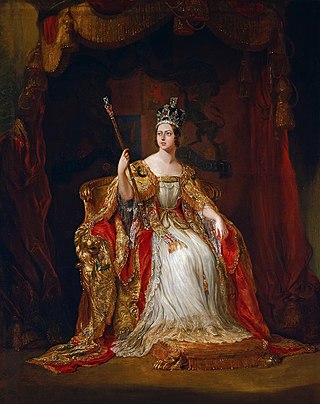
The coronation of Victoria as Queen of the United Kingdom took place on Thursday, 28 June 1838, just over a year after she succeeded to the throne of the United Kingdom at the age of 18. The ceremony was held in Westminster Abbey after a public procession through the streets from Buckingham Palace, to which the Queen returned later as part of a second procession.

The coronation of George VI and his wife, Elizabeth, as king and queen of the United Kingdom and the Dominions of the British Commonwealth, Emperor and Empress consort of India took place at Westminster Abbey, London, on Wednesday 12 May 1937. George VI ascended the throne upon the abdication of his brother, Edward VIII, on 11 December 1936, three days before his 41st birthday. Edward's coronation had been planned for 12 May and it was decided to continue with his brother and sister-in-law's coronation on the same date.
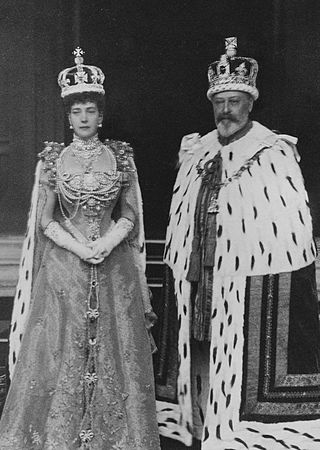
The coronation of Edward VII and his wife, Alexandra, as king and queen of the United Kingdom and the British Dominions took place at Westminster Abbey, London, on 9 August 1902. Originally scheduled for 26 June of that year, the ceremony had been postponed at very short notice, because the King had been taken ill with an abdominal abscess that required immediate surgery. In contrast to the coronation of Queen Victoria, Edward's mother and predecessor, some 64 years earlier, Edward and Alexandra's coronation had been carefully planned as a spectacle reflecting the influence and culture of the British Empire, then at the height of its power, but also as a meaningful religious occasion.

The coronation of George V and his wife, Mary, as king and queen of the United Kingdom and the British Dominions took place at Westminster Abbey, London, on Thursday 22 June 1911. This was the second of four such events held during the 20th century and the last to be attended by royal representatives of the great continental European empires.

The coronation of George IV as King of the United Kingdom took place at Westminster Abbey, London, on 19 July 1821. Originally scheduled for 1 August of the previous year, the ceremony had been postponed due to the parliamentary proceedings of George's estranged wife, Queen Caroline; because these failed to deprive Queen Caroline of her titles and obtain a divorce from the King, she was excluded from the ceremony. In accordance with George's lavish personal tastes, the coronation was the most extravagant ever staged and a number of the traditional elements of the ceremonial were conducted for the last time.

The coronation of George III and his wife Charlotte as King and Queen of Great Britain and Ireland took place at Westminster Abbey, London, on Tuesday, 22 September 1761, about two weeks after they were married in the Chapel Royal, St James's Palace. The day was marked by errors and omissions; a delayed procession from Westminster Hall to the abbey was followed by a six-hour coronation service and then a banquet that finally ended at ten o'clock at night.
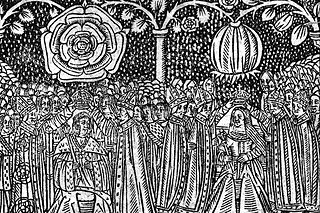
The coronation of Henry VIII and his wife Catherine as King and Queen of England took place at Westminster Abbey, London, on 24 June 1509. Henry ascended the throne two months prior, following the death of King Henry VII on 21 April, and Catherine became his wife and queen on 11 June. The ceremony was presided over by William Warham, the incumbent Archbishop of Canterbury, and organized by Lady Margaret Beaufort, the King's grandmother.


